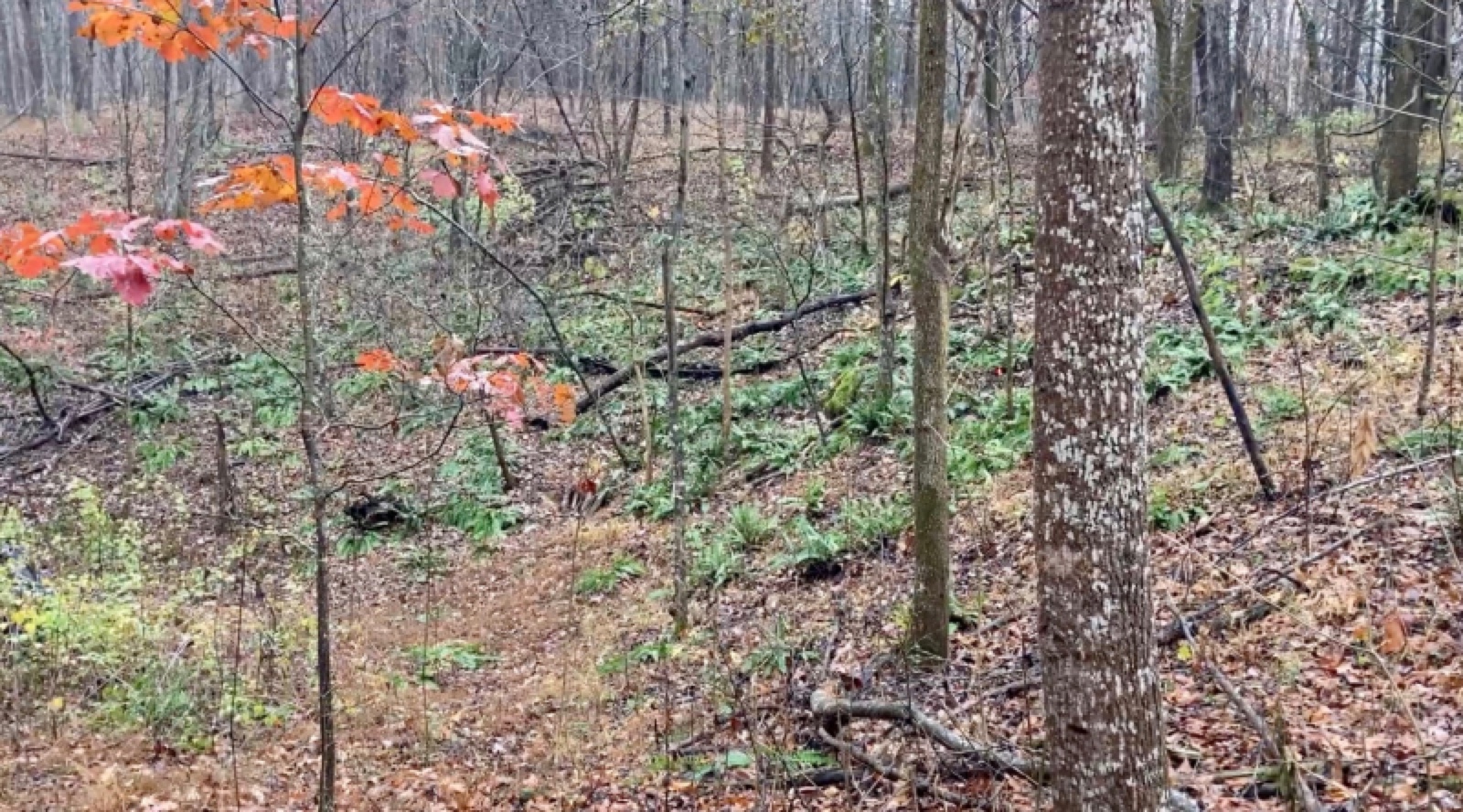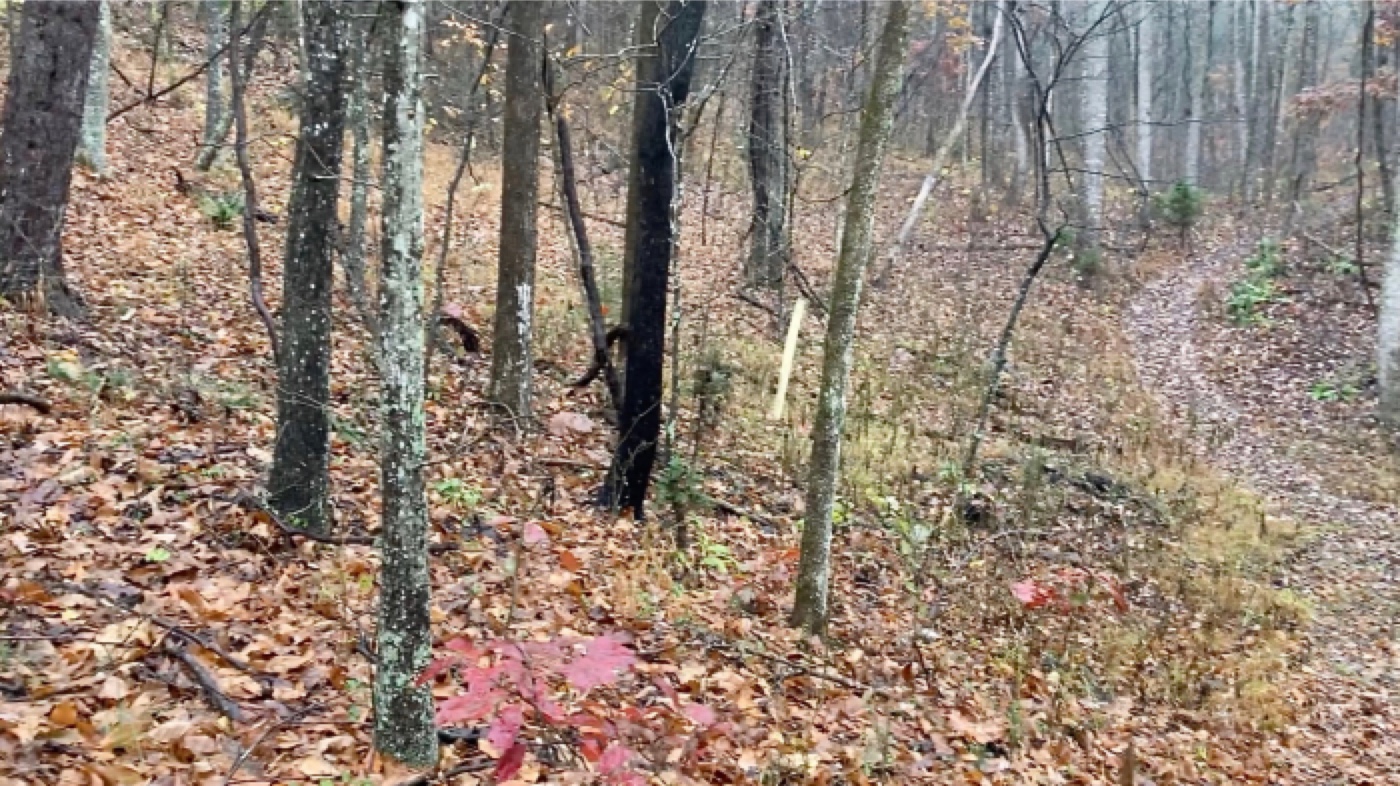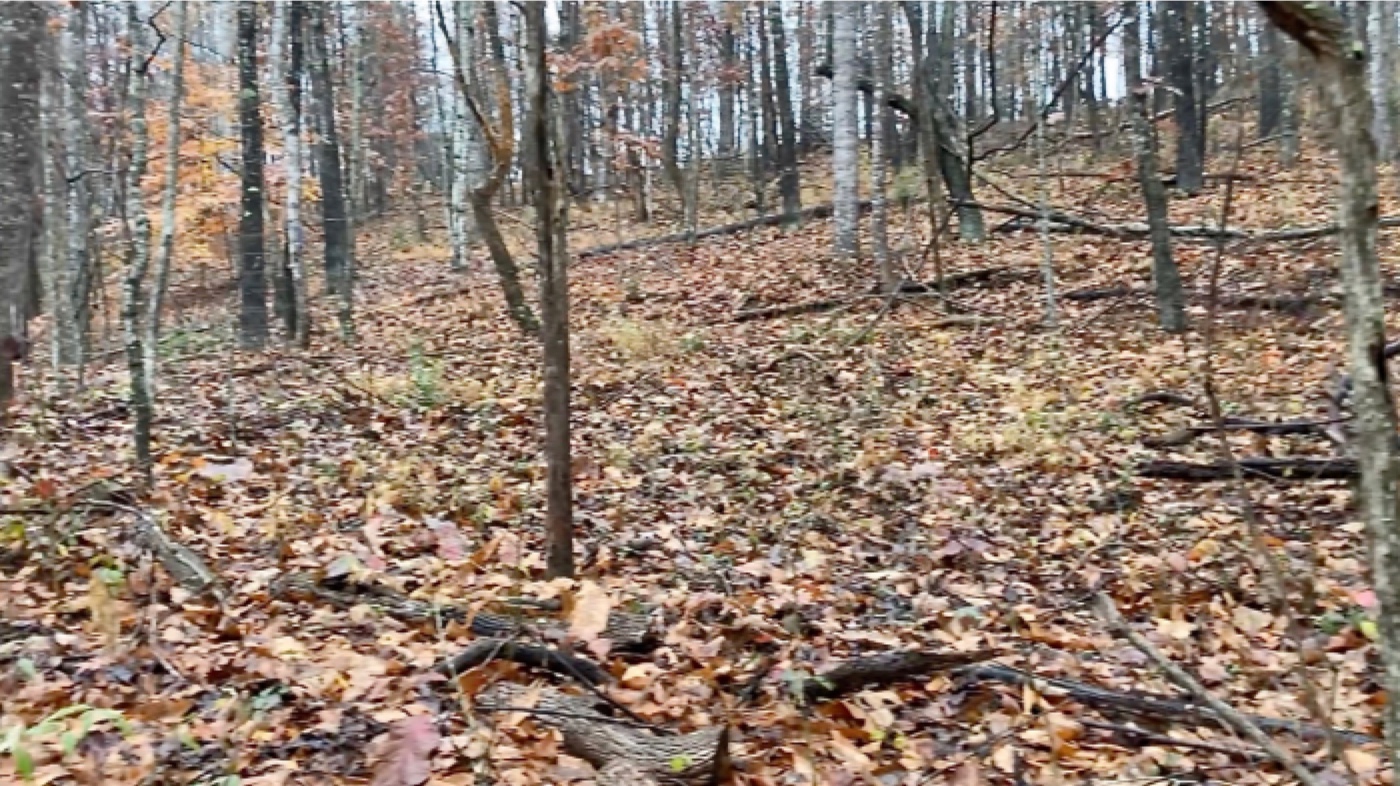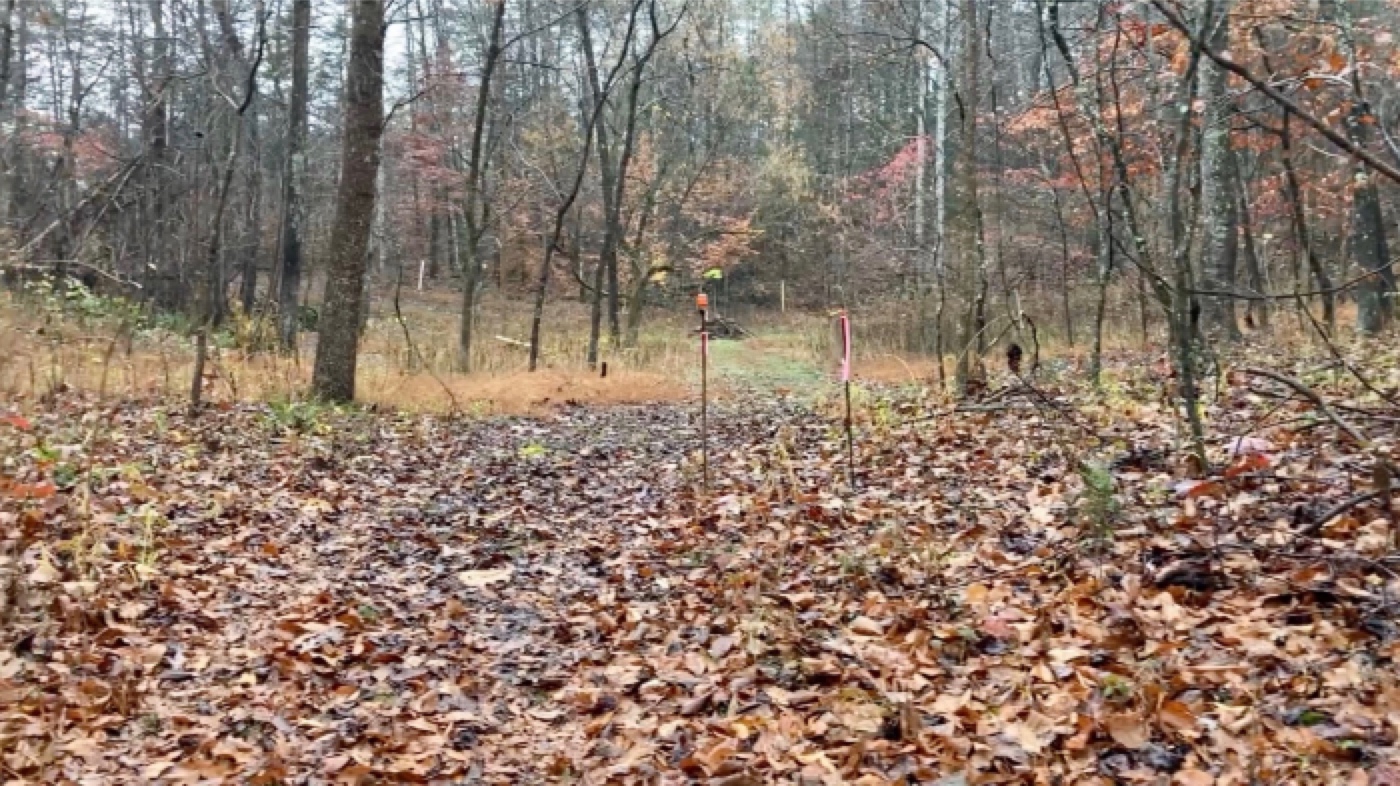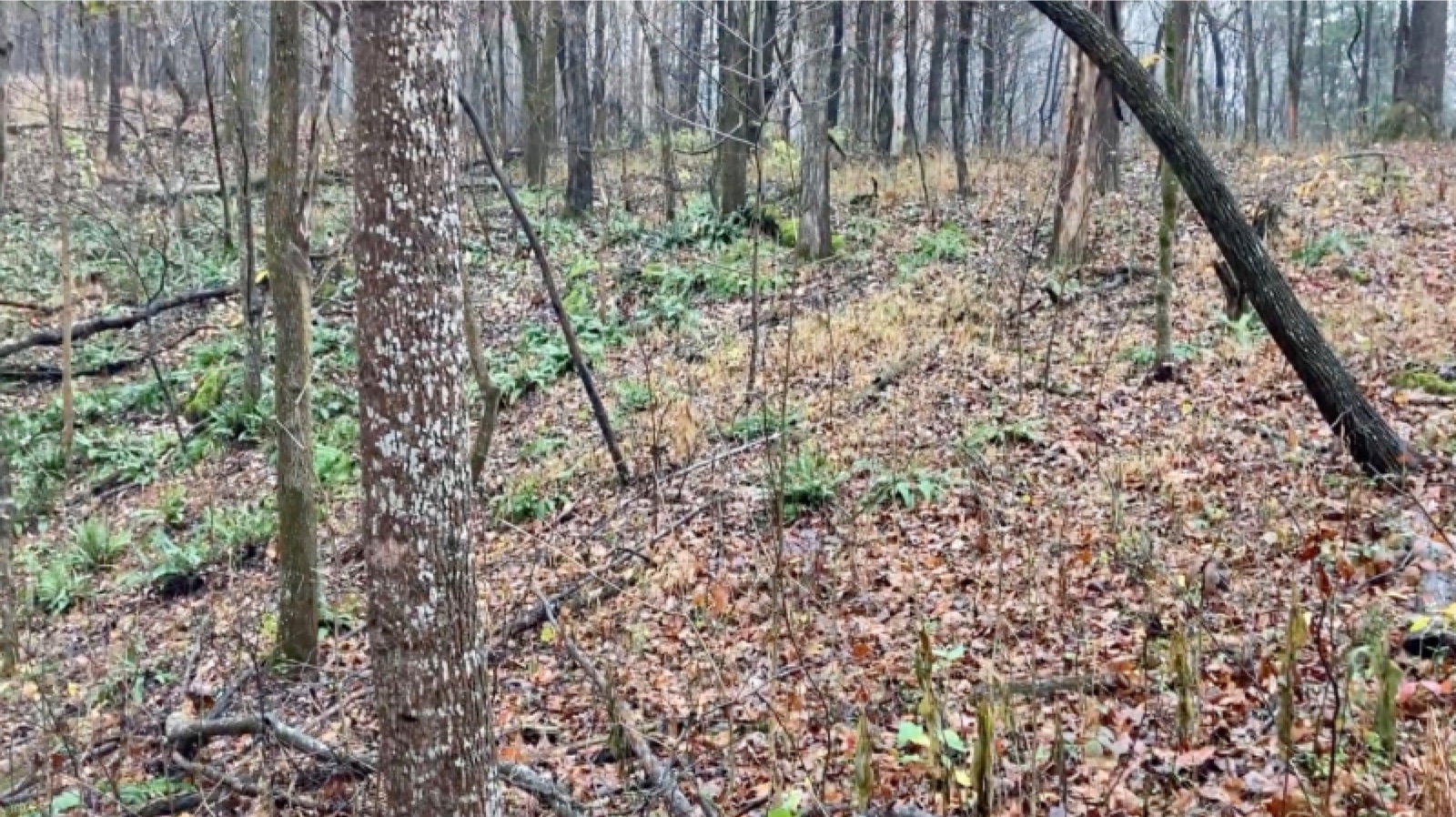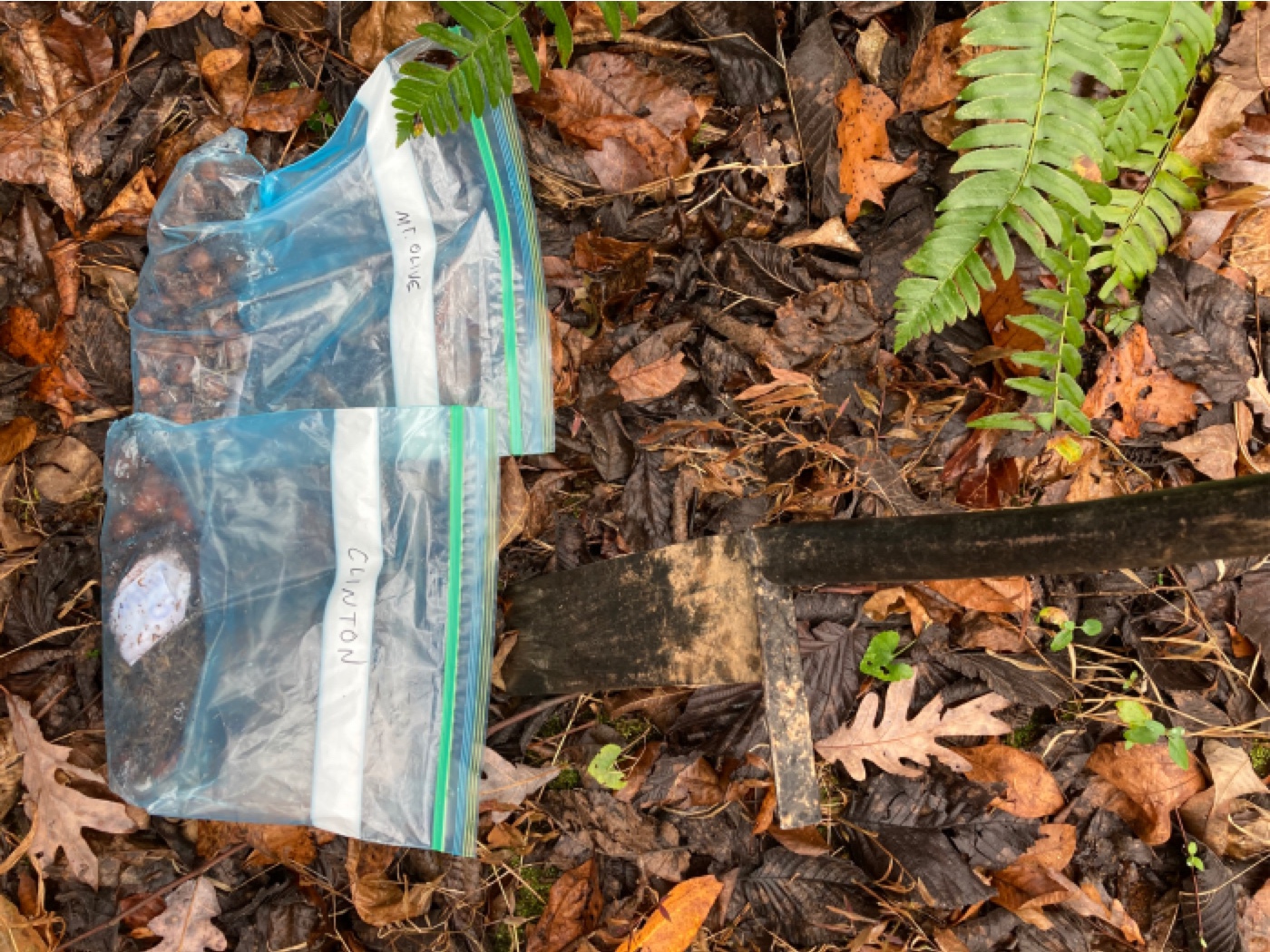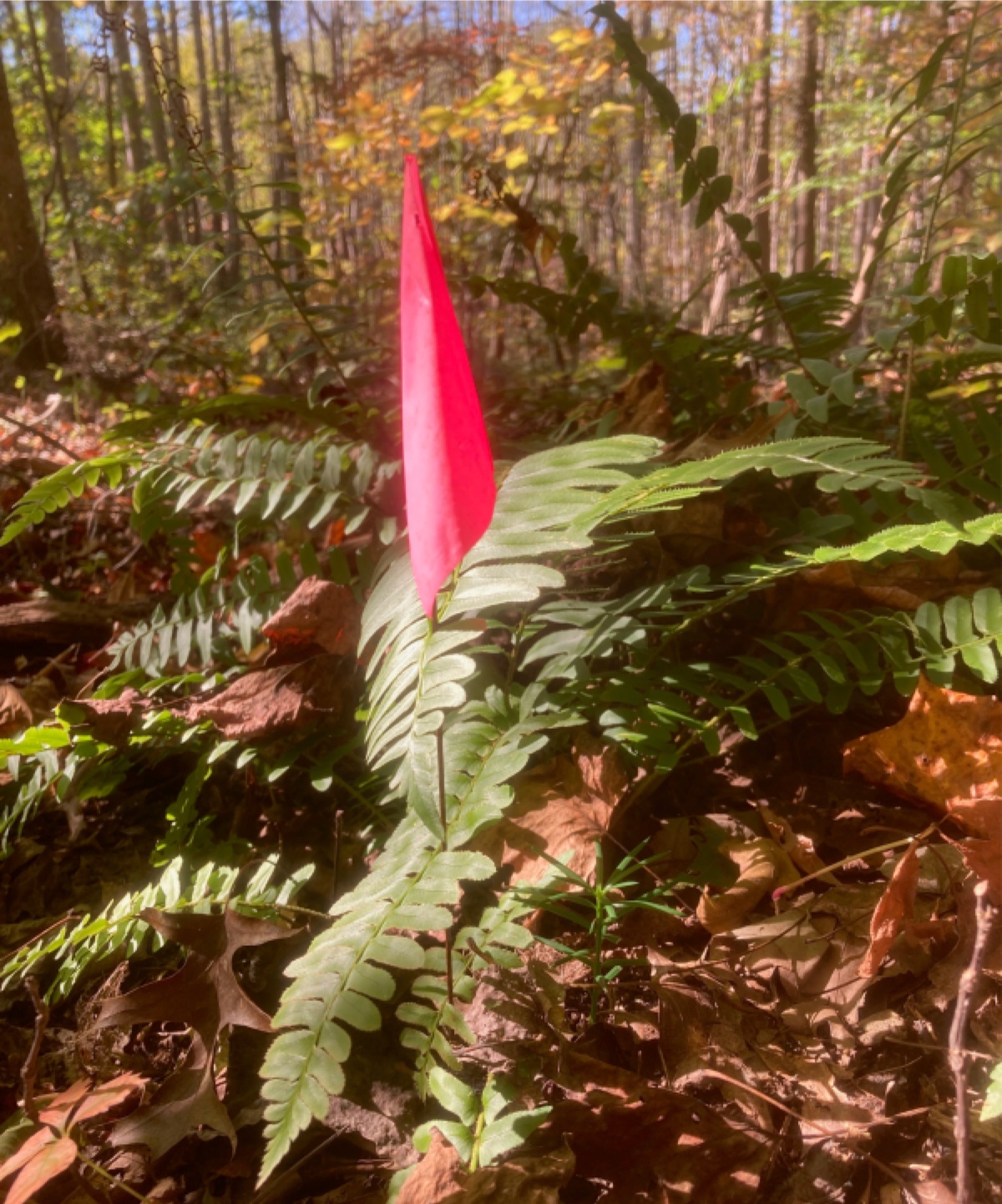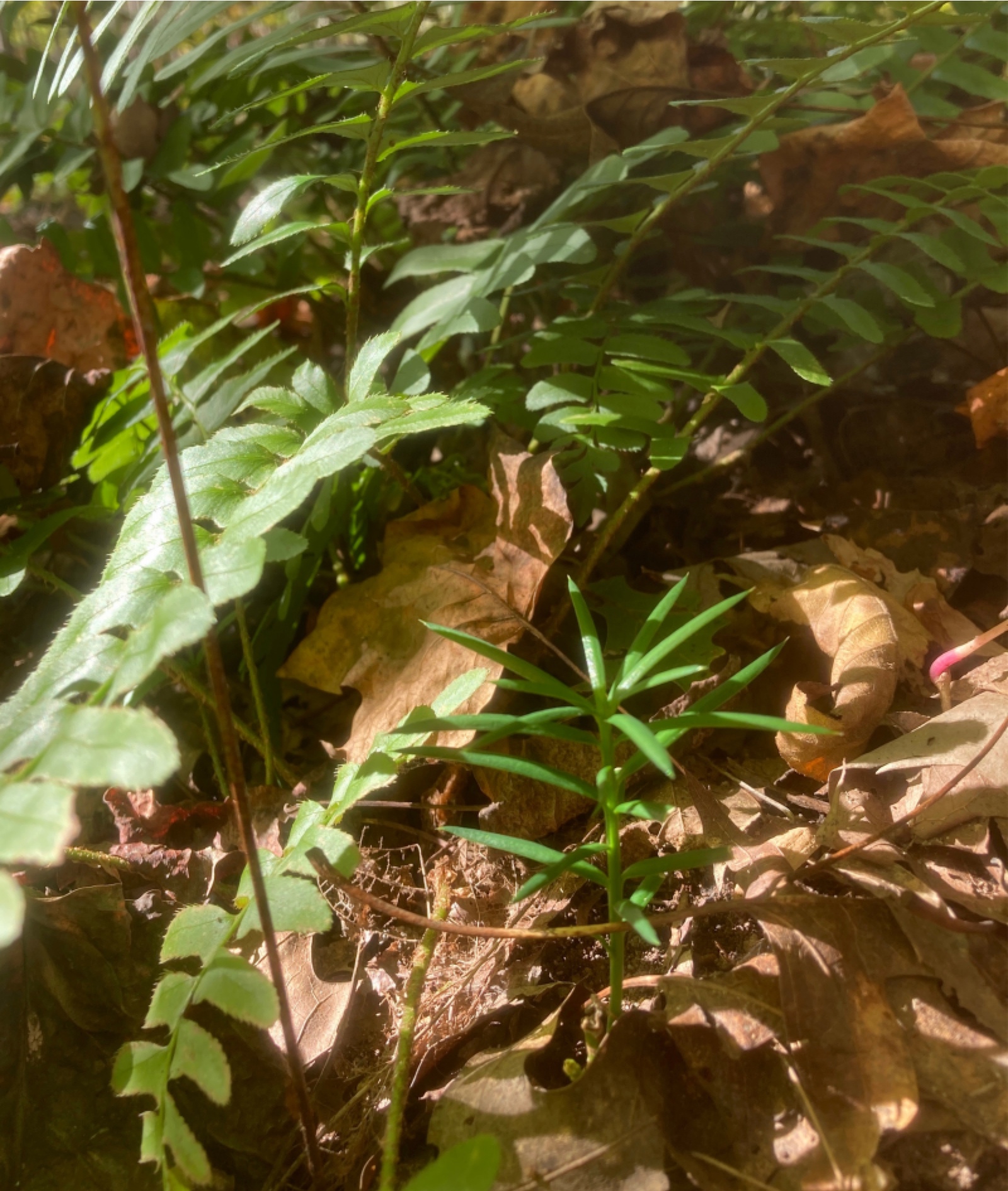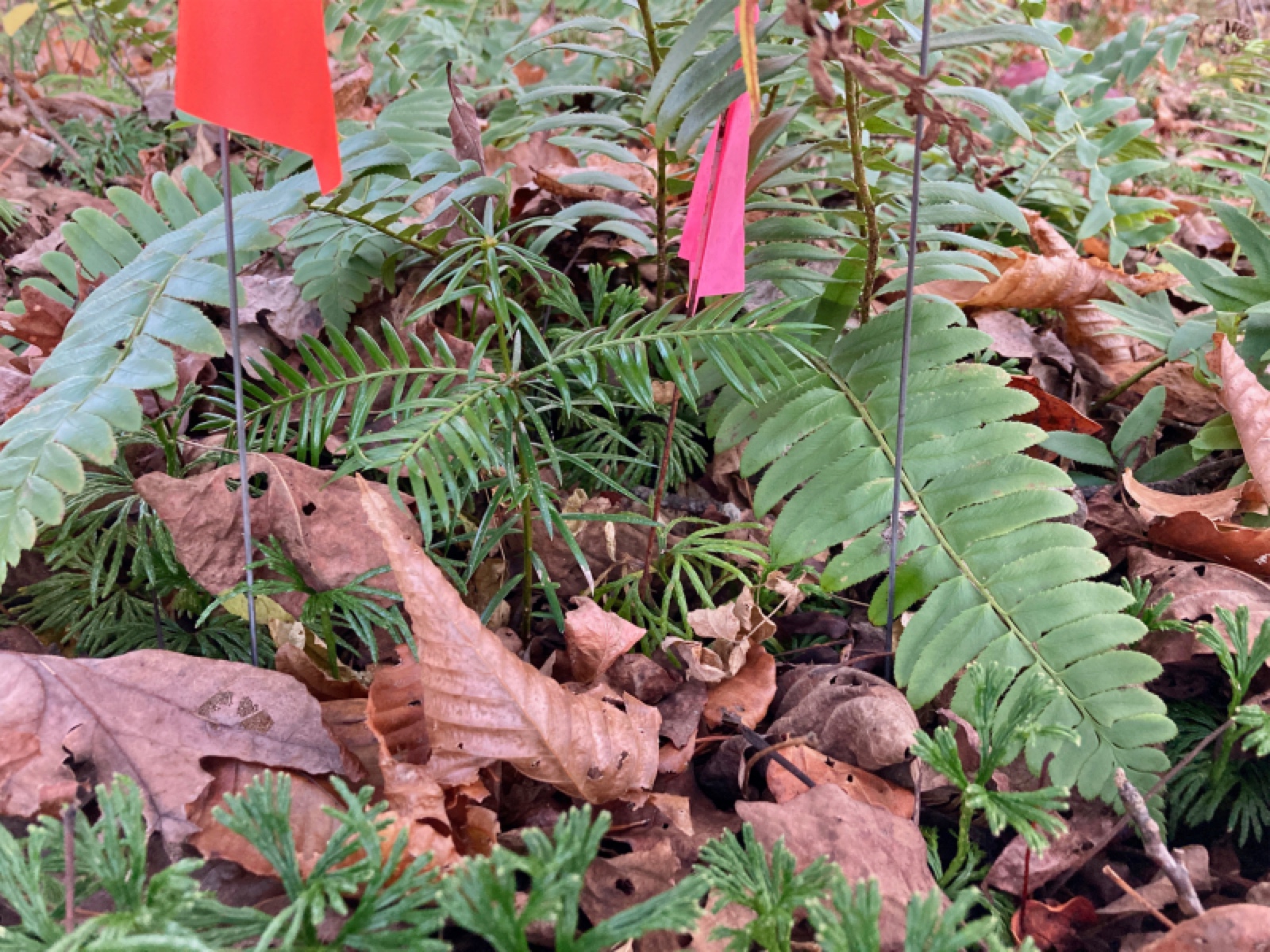|
Florida Torreya Assisted Migration
SHARON MOHNEY writes: LAND AND HABITAT: This 25-acre tract is located in Botetourt County, Virginia, near the towns of Buchanan and Fincastle. Ridges and drainages dissect the area, and there are numerous sinkholes and small caves, some of which are on our property. Tree cover is mostly oaks and poplars, with a nice mix of other hardwoods and some areas of yellow pine and scattered white pine. There's not a lot of understory. Elevation ranges roughly 1300-1500 feet ASL. We have healthy populations of deer and bear and all the other wildlife species you'd expect in the Appalachians, and ''m expecting some challenges keeping the deer from browsing on the torreya seedlings. If I cage the seedlings, I expect that bears will frequently vandalize the cages.
Project begins with seed planting 2020 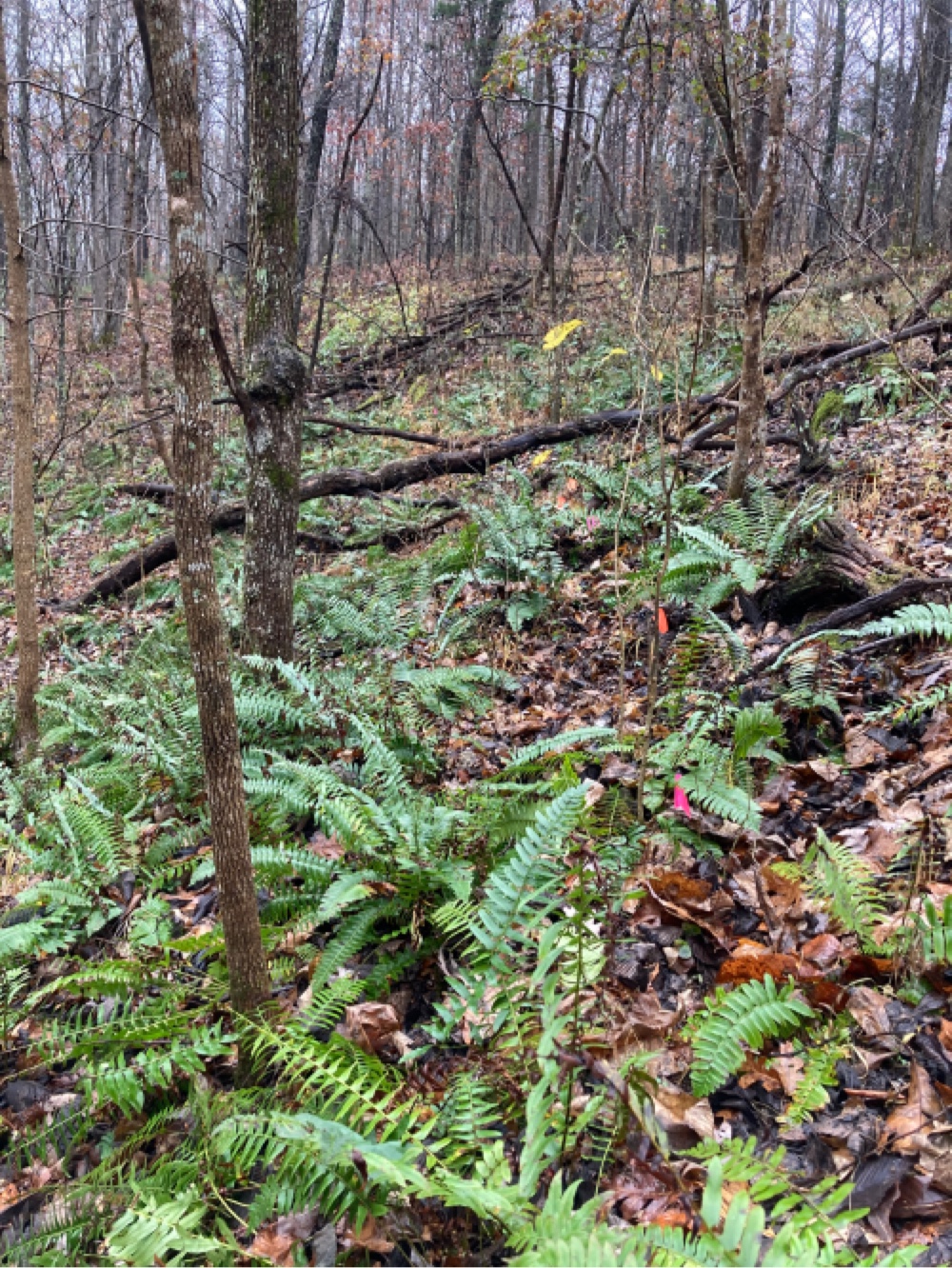
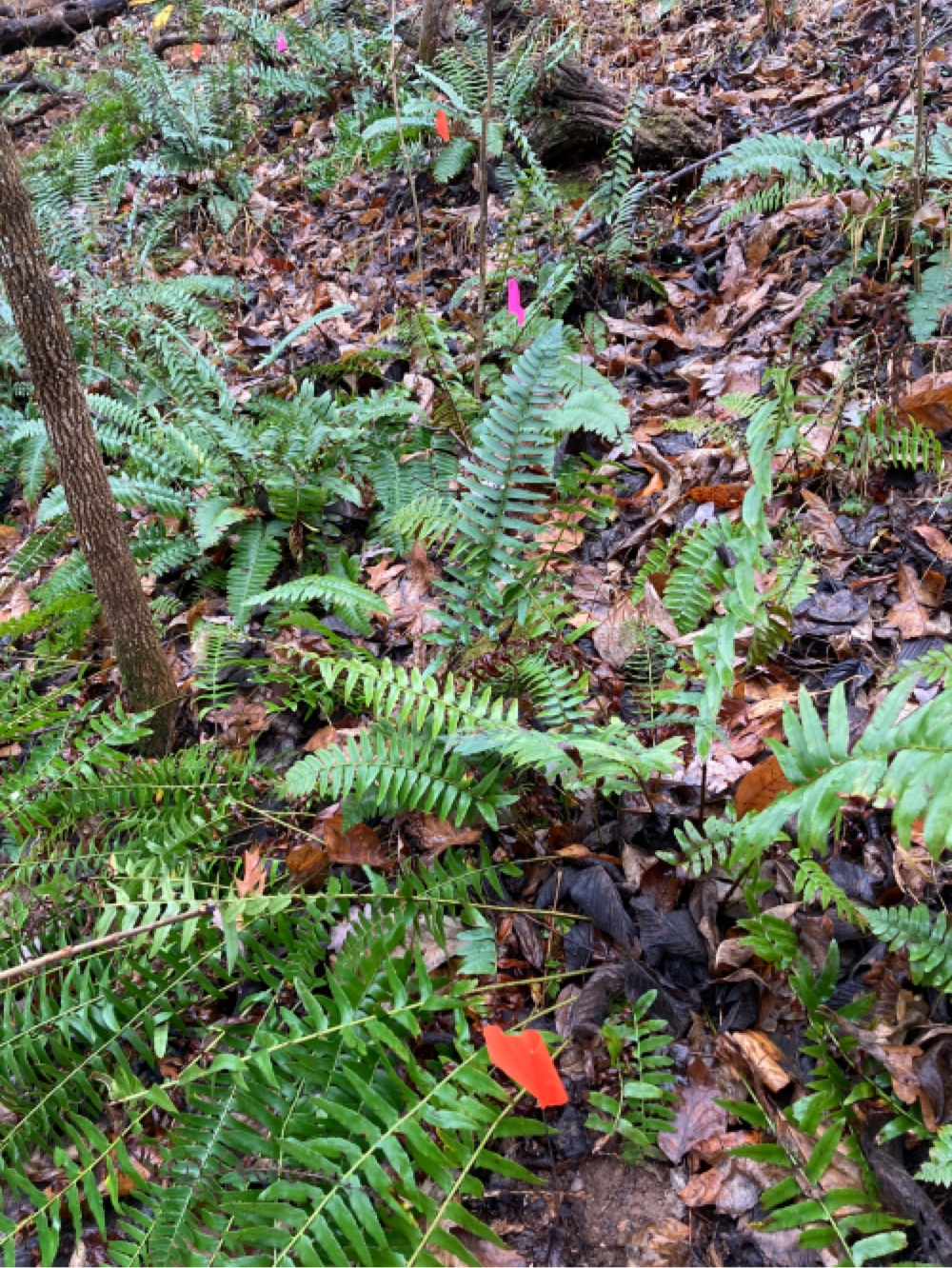
PHOTOS ABOVE: The first 10 seeds were planted amidst this large cluster of Christmas ferns on 11 November 2020. Orange flags mark the planting sites of the seeds from Clinton NC. Pink flags mark the seeds harvested at Mt Olive NC. Total planting in this site was 5 seeds from each source. Below is a distant view of this same fern-rich locale.
PHOTOS BELOW: Beginning at the planting site amid the fern cluster (above), the following 4 photos show a 360-degree rotation, moving counter-clockwise (toward the left) and arriving back at a view of the planting site:
PHOTO BELOW: Seed bags alongside the tree-planting bar used to make the holes.
• APRIL 2021 REPORT BY SHARON MOHNEY: "Of the 8 seeds Fred Bess sent me (from his own crop of 22 seeds Fall 2018), 6 germinated. One died shortly after emergence, and one died this winter. Still have 3 very healthy looking ones and one that I believe will survive. Am still hoping for germination of the three that haven't shown up yet."
• OCTOBER 2021 - FIRST GERMINATION OF FREE-PLANTED 2020 SEED. SHARON writes 20 October 2021: "I was walking a part of my place today, looking for any burning bush seedlings to pull up, and decided to walk one of my torreya flag lines. Look what I found!"
Editor's note: This seedling arose from seed "free-planted" directly into the soil last November. It is unusual for seeds to germinate after just one winter. In Virginia, there would be two flushes of above-ground growth (or seedling emergence): late spring is the first flush, then late summer is the second. If the seedling's leaves are still soft (and the points not prickly yet), then this would have been the late-summer flush. Sharon has a lot of Polystichum "Christmas" ferns on her property, whose evergreen leaves offer superb camouflage against deer herbivory for seedlings placed beneath the cover of the fronds. The fern also establishes mychorrizal connections with the same kind of fungi as Torreya requires.
PHOTOS BELOW: See the new seedling sprouting on the lower right side of the flag photo.
• NOVEMBER 2022 - Unbrowsed seedling hiding by a fern.
SHARON wrote: "I checked 60 of my planting sites a few days ago. Those are closest to my house and I've looked at them before. There are only three torreya seedlings and I've known about all three since last year. I've now double-flagged those, and I plan to cage them. I was sure one of them had been killed by browsing, but it came back. I'll check the rest of my sites as I get time over the next couple of months. I’m sitting in a deer stand a lot right now...."
CONNIE responded: "Terrific that you are hunting deer. That gave me a new idea for an ideal shift in hunting regulations to help endangered plants: If any private landowner agreed to grow an endangered plant on their property, they would gain rights to harvest deer throughout the entire winter! Your photo is gorgeous! And I noticed Selaginella protecting the torreya on the opposite side from the fern. Both have the right kind of mycorrhizae! I just found an interesting paper (no paywall) when I googled Selaginalla mycorrhiza:"
• MARCH 2023 - Unbrowsed seedling hiding by a fern.
SHARON wrote: "I still have some areas to check but found one more seedling just a few days ago - that makes four now. The picture(s) I sent you are from the seeds I planted and not from Fred's seedlings. I need to make some cages to get those four seedlings protected from deer — almost lost one to browsing last year but it has recovered. I'll get those other areas checked within the next 2 months, before the ground cover gets too thick."
• JANUARY 2024 - Using cages to solve the deer-herbivory problem.
SHARON wrote: "I feel optimistic about my torreyas. I've caged the ones I've got and plan to put taller cages on them when they get bigger. Would like them to get tall enough that the deer can't eat the tops out. Fred sent me 50 of his seeds and I'm hoping I'll have quite a population here eventually."
• FEBRUARY 2025 - Delayed germination and other results.
SHARON wrote: "I was interested to see [your recent torreya report] mentioned that some torreya seeds may not germinate for 3 or even 4 years, as I think I have found one or two of mine that took three years. I need to do a proper inventory of the ones I have. I've had pretty dismal germination, I think, and probably have no more than 8 seedlings. I planted some more last year that Fred had sent me. What I did was to plant five [seeds] around each of the germinated seedlings I already have, with the hope that I'll end up with a few places where I have two or more trees close together for pollination. I've been caging the seedlings I find because I've already had one nipped by deer (it survived)."
|
